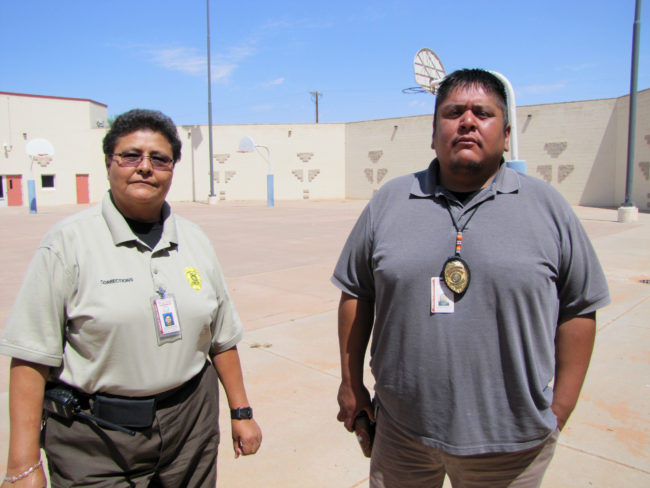
Laurel Morales/NPR
State courts are twice as likely to incarcerate Native teens for minor crimes such as truancy and alcohol use than any other racial and ethnic group, according to the Tribal Law and Policy Institute. And juvenile detention facilities around the country have a disproportionately high number of Native American youth, according to an Indian Law and Order Commission report.
On the reservation, it’s different.
On a recent visit to the Navajo Nation juvenile detention center in Tuba City, it’s quiet. “Right now we don’t have anybody in custody,” says Sgt. Barbara Johnson.
The Navajo Nation “is really reluctant on sentencing youth to these facilities. It’s used more as a last resort, so our population has been very, very low,” says Corrections Lt. Robbin Preston.
He says that doesn’t reflect the number of troubled Navajo youth. But the Navajo and many other tribes have no rehabilitative services to offer them. So a Native youth arrested on the reservation faces a maze of legal jurisdictions.
Addie Rolnick, a law professor at the University of Nevada, Las Vegas, says there is no one juvenile justice system for these kids.
“There are rather at least three different jurisdictions at any given time with power over Native youth. The federal government might be involved. The state government might be involved and then the tribal government,” Rolnick says.
And she says where they wind up may do more harm than good.
According to the Indian Law and Order Commission report, these youth suffer from post-traumatic stress at a rate higher than military personnel who served in the Iraq and Afghanistan wars. So Rolnick says incarceration should be the last option for kids exposed to so much violence.
“Because if you have a kid who’s been damaged when they come into a system, just about the worst thing you can do is to lock them up, put them under surveillance all day and have guards watching them,” Rolnick says.
The U.S. Attorney General’s advisory committee on Native children says prevention, treatment programs and case workers have proven to be more effective than incarceration.
9(MDEwMjQ0ODM1MDEzNDk4MTEzNjU3NTRhYg004))
